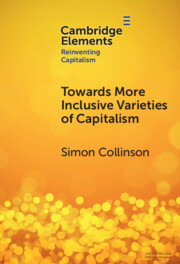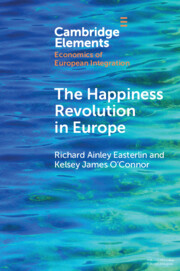Refine search
Actions for selected content:
330 results
4 - The Industrial State
-
- Book:
- States of Transition
- Published online:
- 31 October 2025
- Print publication:
- 13 November 2025, pp 91-109
-
- Chapter
- Export citation
Microfinance, competition, and growth
-
- Journal:
- Macroeconomic Dynamics / Volume 29 / 2025
- Published online by Cambridge University Press:
- 04 November 2025, e155
-
- Article
- Export citation
Conclusion
- from Part IV - India and the World
-
- Book:
- Democracy and Inequality in India
- Published online:
- 11 October 2025
- Print publication:
- 30 October 2025, pp 296-317
-
- Chapter
- Export citation
7 - India and the World
- from Part IV - India and the World
-
- Book:
- Democracy and Inequality in India
- Published online:
- 11 October 2025
- Print publication:
- 30 October 2025, pp 267-295
-
- Chapter
- Export citation
2 - Politics of Growth and Distribution
- from Part I - Politics at the Apex
-
- Book:
- Democracy and Inequality in India
- Published online:
- 11 October 2025
- Print publication:
- 30 October 2025, pp 64-92
-
- Chapter
- Export citation
Conclusion and Epilogue
-
- Book:
- An Economic History of Europe
- Published online:
- 02 October 2025
- Print publication:
- 02 October 2025, pp 275-287
-
- Chapter
- Export citation
Introduction
-
- Book:
- Burning Swamps
- Published online:
- 06 September 2025
- Print publication:
- 25 September 2025, pp 1-24
-
- Chapter
-
- You have access
- HTML
- Export citation
The role of government intervention in balancing economic growth and environmental sustainability: a global dynamics approach across economies
-
- Journal:
- Macroeconomic Dynamics / Volume 29 / 2025
- Published online by Cambridge University Press:
- 22 September 2025, e144
-
- Article
- Export citation
Testing Kuznets’ environmental hypothesis for the Legal Amazon: a nonlinear approach
-
- Journal:
- Environment and Development Economics / Volume 30 / Issue 6 / December 2025
- Published online by Cambridge University Press:
- 18 September 2025, pp. 442-459
-
- Article
- Export citation
Entrepreneurship capital in Spain and its impact on modern economic growth (1886–2000)
-
- Journal:
- Revista de Historia Economica - Journal of Iberian and Latin American Economic History , First View
- Published online by Cambridge University Press:
- 12 September 2025, pp. 1-26
-
- Article
-
- You have access
- Open access
- HTML
- Export citation
4 - Commodity Shocks and Incumbency Disadvantage in Rural Brazil
-
- Book:
- Incumbency Bias
- Published online:
- 17 May 2025
- Print publication:
- 05 June 2025, pp 93-110
-
- Chapter
- Export citation

Towards More Inclusive Varieties of Capitalism
-
- Published online:
- 30 May 2025
- Print publication:
- 26 June 2025
-
- Element
- Export citation
6 - Regulatory Redemption and the All Japan System
- from Part III - Regulatory Redemption
-
- Book:
- Regulatory Violence
- Published online:
- 21 May 2025
- Print publication:
- 22 May 2025, pp 155-180
-
- Chapter
-
- You have access
- Open access
- HTML
- Export citation

Agent-based Macroeconomics
- The Schumpeter Meeting Keynes Models
-
- Published online:
- 02 May 2025
- Print publication:
- 29 May 2025
-
- Element
- Export citation
Temperature and quarterly economic activity: panel data evidence from Mexico
-
- Journal:
- Environment and Development Economics , First View
- Published online by Cambridge University Press:
- 07 April 2025, pp. 1-21
-
- Article
- Export citation
10 - A strong long-term care system is necessary for economic growth
-
-
- Book:
- The Care Dividend
- Published online:
- 21 March 2025
- Print publication:
- 03 April 2025, pp 318-350
-
- Chapter
-
- You have access
- Open access
- HTML
- Export citation
4 - Economic and Political Outcomes
- from Part II - What Difference Does It Make? Consequences of Corruption
-
- Book:
- Corruption in America
- Published online:
- 21 March 2025
- Print publication:
- 03 April 2025, pp 57-77
-
- Chapter
- Export citation
Balancing the Ballot: Going Beyond the 2018 Gender Parity Law to Encourage Women's Political Participation in Japan
-
- Journal:
- Asia-Pacific Journal / Volume 21 / Issue 12 / December 2023
- Published online by Cambridge University Press:
- 14 March 2025, e2
-
- Article
-
- You have access
- Open access
- Export citation

The Happiness Revolution in Europe
-
- Published online:
- 05 March 2025
- Print publication:
- 03 April 2025
-
- Element
-
- You have access
- Open access
- HTML
- Export citation
A new estimate of Ecuador’s GDP, 1900–50
-
- Journal:
- Revista de Historia Economica - Journal of Iberian and Latin American Economic History / Volume 43 / Issue 1 / March 2025
- Published online by Cambridge University Press:
- 30 April 2025, pp. 9-32
- Print publication:
- March 2025
-
- Article
-
- You have access
- Open access
- HTML
- Export citation
